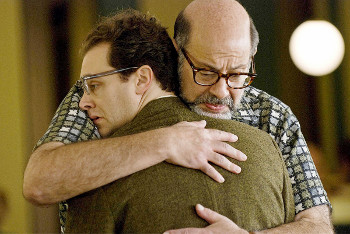 In taking down Christopher Nolan’s Inception, Jim Emerson writes: “[W]hat this movie’s facilely conceived CGI environments have to do with dreaming, as human beings experience dreams, I don’t know. … [T]he movie’s concept of dreams as architectural labyrinths – stable and persistent science-fiction action-movie sets that can be blown up with explosives or shaken with earthquake-like tremors, but that are firmly resistant to shifting or morphing into anything else – is mystifying to me.” The complaint is fair enough, given that Inception regularly refers to “dreams.” But what’s going on is only marginally related to how “human beings experience dreams.” The movie’s plot concerns espionage that uses as its tool a shared, drug-induced dream-like state with environments created by external “architects.” And if one does a little thinking, one realizes that the technique of the premise is effective only if scientists and practitioners can exercise control over the dreaming – that is, if they eliminate the inherent fluidity, randomness, and chaos.
In taking down Christopher Nolan’s Inception, Jim Emerson writes: “[W]hat this movie’s facilely conceived CGI environments have to do with dreaming, as human beings experience dreams, I don’t know. … [T]he movie’s concept of dreams as architectural labyrinths – stable and persistent science-fiction action-movie sets that can be blown up with explosives or shaken with earthquake-like tremors, but that are firmly resistant to shifting or morphing into anything else – is mystifying to me.” The complaint is fair enough, given that Inception regularly refers to “dreams.” But what’s going on is only marginally related to how “human beings experience dreams.” The movie’s plot concerns espionage that uses as its tool a shared, drug-induced dream-like state with environments created by external “architects.” And if one does a little thinking, one realizes that the technique of the premise is effective only if scientists and practitioners can exercise control over the dreaming – that is, if they eliminate the inherent fluidity, randomness, and chaos.

 In taking down Christopher Nolan’s Inception, Jim Emerson
In taking down Christopher Nolan’s Inception, Jim Emerson  I was surprised after watching (and then reading reviews of) the Coen brothers’ A Serious Man that there was such a fervent (if small) backlash against it. The movie – about a Job-like Jewish professor in a Minnesota suburb in the late 1960s – struck me as so right that I didn’t allow for opposite reactions. Yet there they are.
I was surprised after watching (and then reading reviews of) the Coen brothers’ A Serious Man that there was such a fervent (if small) backlash against it. The movie – about a Job-like Jewish professor in a Minnesota suburb in the late 1960s – struck me as so right that I didn’t allow for opposite reactions. Yet there they are. When I say that the filmed version of Watchmen and the horror remake Quarantine are faithful to the point of tedium, I intend that largely as a compliment. Great talent, care, time, and money have been spent not fixing what ain’t broke. Considered separate from their sources, both movies work. But they’re damned depressing.
When I say that the filmed version of Watchmen and the horror remake Quarantine are faithful to the point of tedium, I intend that largely as a compliment. Great talent, care, time, and money have been spent not fixing what ain’t broke. Considered separate from their sources, both movies work. But they’re damned depressing. Describing
Describing 